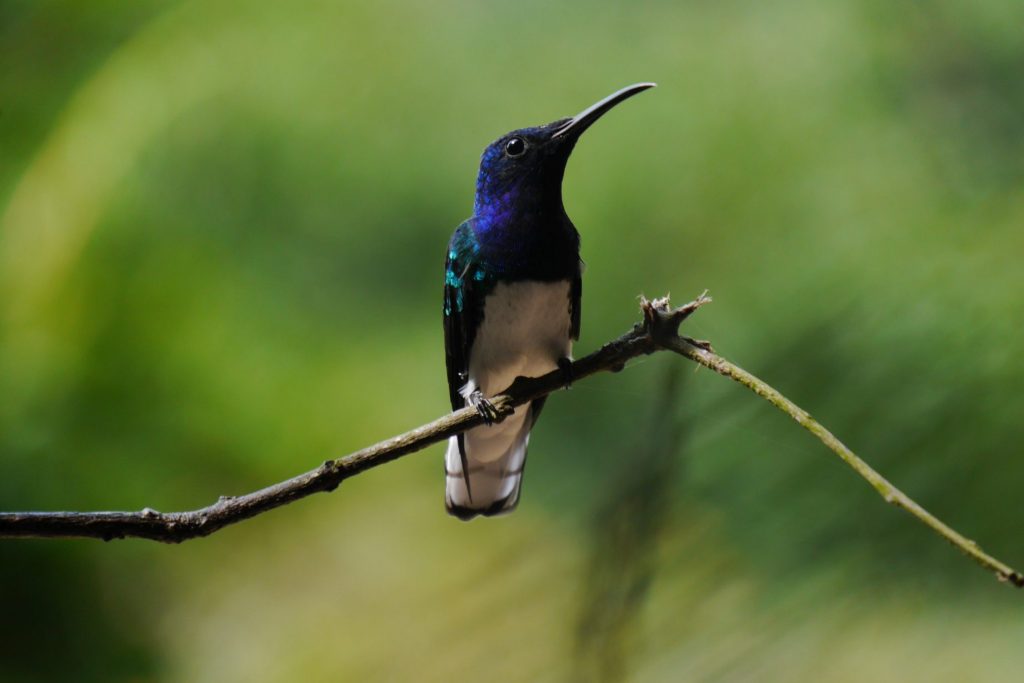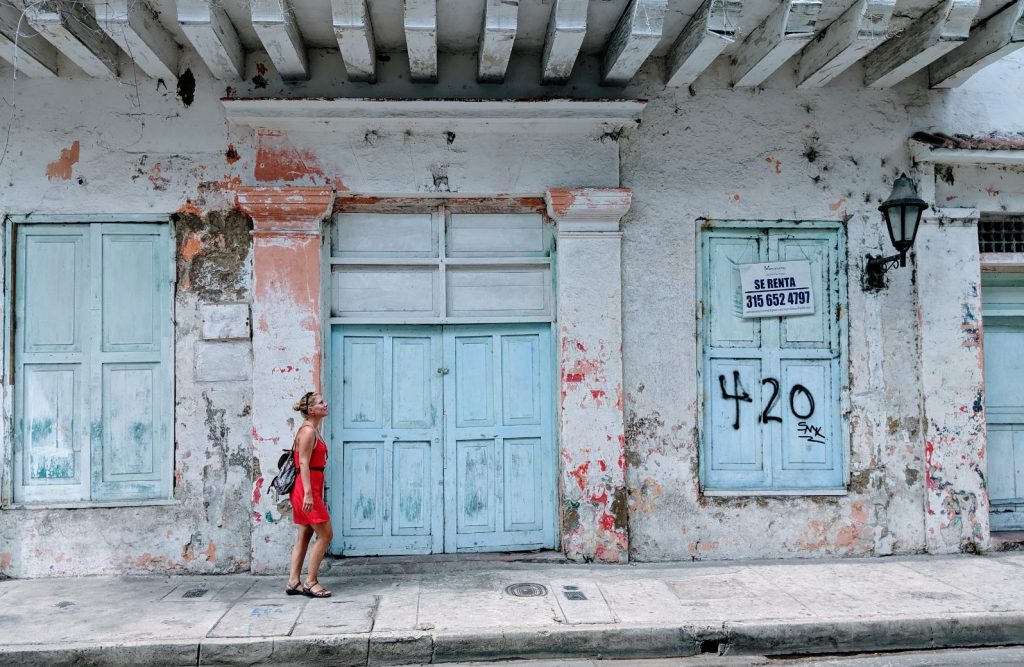Is Colombia safe to travel to so that you can have an awesome vacation in this beautiful country? Colombia is not exactly the first country that comes to mind when planning a backpacking trip to South America. Many still have the bad pictures of the violent drug cartels in their mind and also our parents advised us not to travel to Colombia. The country is much too dangerous and you have to be afraid of kidnappings. That this is no longer the case. Colombia is much safer today than it was 10-20 years ago.
It has become a real backpacker’s paradise through which even families with small children like to travel. In addition, we want to tell you when is the best time to travel to Colombia, what vaccinations you need and whether you can travel well through the South American country even without knowledge of Spanish. These and other important information you can read now in our travel tips to Colombia.
PS: If you are looking for a 3 week itinerary through Colombia, then check out this travel report from us.
What is the Best Time to Travel to Colombia
Since the equator runs through Colombia, the country is in the tropical climate zone and has little temperature variation. Also, there are no seasons here, only the rainy season (April to June & October to November) and the dry season (December to March). During the rainy season, heavy rains and even landslides can occur. In addition, hurricanes can occur on the Caribbean coast between June and December.
The humidity in Colombia is naturally high and only in the mountainous altitudes (e.g. in the Sierra Nevada Santa Marta) more bearable. So when should you travel to Colombia? The main travel season is certainly in the months of December to March. But also the prices are corresponding.
In the rainy season there are also two months (July & August) that are very dry and sunny and somewhat cheaper than the months around the beginning of the year. Due to the location on the equator, the days in Colombia are all relatively the same length. The sun usually rises between 6-7 am and disappears behind the horizon between 6 and 7 pm.
What Vaccinations do I need for Colombia?
There are no vaccinations explicitly required for entry, but a yellow fever vaccination is recommended in many areas of the country. In addition, you should have all possible standard vaccinations (tetanus, diphtheria, hepatitis, etc.), which you also need for many other regions of the world.
Beim Klick wird Youtube.com aufgerufen (Datenschutzerklärung) | By clicking, Youtube.com opens (Privacy)
Is Colombia Safe for Travel?
Especially for backpackers, Colombia is a dream because of the many hostels and the – compared to other South American countries – low prices. In countries like Chile or Costa Rica it is much more expensive. The public transportation is mostly safe and e.g. the coaches are also quite comfortable. If you have the necessary foresight and consideration, you can travel Colombia as a man or as a woman alone without any problems. Even we as a couple never had a situation on our backpacking trip through Colombia in which we felt unsafe or uncomfortable. So if you visit the touristy places we would consider Colombia safe for travel.
Colombians are mostly very friendly and if you speak a little Spanish you will get in touch with them quickly. Hotels do not need to be booked well in advance and activities do not need to be booked on the internet, but it is best to do this with local suppliers on the spot.
Is it possible to travel through Colombia without speaking Spanish?
As in most South American countries, almost no one in Colombia speaks English. Therefore, you should know at least a few words of Spanish. But communicating with hands and feet can also be fun. Some Colombians gesticulate very extensively, and so you can often understand quite a bit if you just pick up a few words and watch your counterpart’s gestures closely. Most Colombians are also friendly, helpful and very hospitable. If you can formulate simple sentences in Spanish, you will be able to get along to some extent.

We also knew very little Spanish during our trip and had to say “Despacio” (Slow down) quite often in order to understand to some extent what the person we were talking to was trying to tell us. But it was fun and we got along well. But it is also clear that with a good knowledge of Spanish you will always get further than if you constantly have to ask the Google translator.
Do I need a Visa for a Backpacking Trip through Colombia?
As a German citizen you don’t need a visa to enter Colombia, but only a passport that is valid for at least 6 months. With this you can stay in Colombia for 90 days and extend your stay for another 90 days. There are no entry or exit fees in Colombia.
How much is a backpacking trip to Colombia?
Backpacking in Colombia will cost you a lot less than in other countries in South America or in many countries in Central America. Hotels, transportation and even food are comparatively cheap. Simple hostels can be found for as little as 10 Euro per night. The low-cost airline VivaColombia competes with Ryanair with its prices and bus tickets start at about 1 Euro per person for one hour of bus travel.
On our Latin America trip, Colombia was the cheapest country (besides Guatemala) and also souvenirs we could get comparatively cheap. For example, in Medellin we were able to buy a Pablo Escobar t-shirt for only 3 Euro at a street stall and cab rides are also quite affordable. A good website to compare the prices of different countries is Precios Mundi. Here you can specify any country and see standard prices for various services such as restaurant visits, cab rides and food.
How to travel within Colombia?
By Bus
Of course, you can’t expect a perfectly developed infrastructure like in Germany in the huge country of Colombia. There is no railroad network here, but mainly long-distance buses that connect all places in Colombia. These are quite comfortable and are also offered for overnight trips. Due to the sometimes long distances, however, the journeys can take a long time, which is why tourists like to use the numerous airlines. Buses for shorter distances (up to about 2 hours) are usually not very comfortable and you are often lucky to get a seat. But you will be traveling with the locals.
By Plane
A very large and cheap airline is VivaColumbia (the Colombian Ryanair), which offers really insanely cheap prices, but has a correspondingly bad reputation. But also other airlines offer their services sometimes very cheap (be careful: luggage is not included in most prices) and you can get from A to B quickly and relatively cheap.
By Cab
Cabs are like everywhere in the world of course also in Colombia. And like almost everywhere, there are almost never taximeters, so you should always negotiate the price beforehand to avoid any nasty surprise.
By Mototaxis
For the proverbial last mile, there are always motorcycle cabs, especially in rural areas. You can simply hail one along the road or hop on one of the ones standing by everywhere. The price is usually fixed, so there is no point in bargaining. Nevertheless, you should of course inquire about the price beforehand. Helmets are never available and sometimes there were three of us on one motorcycle. Everything does not meet German safety standards, but you get to your destination cheaply and it’s also fun.
Is Colombia Dangerous?
Many people, of course, think of Colombia in terms of drugs, cocaine, Pablo Escobar and kidnappings. So did our parents when we told them about our travel plans. And it’s true of course, just a few years ago Colombia was dominated by gang warfare and murders were commonplace, especially in Medellin. But is Colombia safe for travel after this?
The History of the Drug Cartel
Especially in Medellin’s Comuna 13 district, there was statistically almost one murder per day in the 1990s. As late as 1991, Medellin was reportedly the city with the highest murder rate in the world, with a total of 7,000 murders. Colombia, and especially Medellin, was completely in the hands of the Medellin Cartel. Constant, deadly clashes between drug gangs, paramilitaries and security forces, social tensions and high unemployment brought Colombia to an extremely desolate state.
Even after the death of Pablo Escobar in 1993 and the resulting dissolution of the Medellin cartel, crime did not decline. The unemployed hit men fought bloody battles with the communist urban guerrillas in Medellin, among other places. Even years after the end of the cartel, Medellin was still the city with the highest murder rate worldwide.
The Situation in Colombia Today
Only gradually did the situation in Colombia (and in Medellin in particular) calm down, with the murder rate dropping significantly after the turn of the millennium. With a new mayor, much was invested in Medellin (and also in the rest of Colombia) and things slowly started to improve. Proverbial also in Comuna 13 in Medellin, because in 2011 the famous escalator was inaugurated in Comuna 13.
Since then, the living conditions of the people living there have improved enormously. After 50 years of drug and guerrilla warfare, the signs in Colombia are finally pointing to peace Today, Colombia has become a tourist destination that is very interesting not only for backpackers, but also for families with children from the USA and Europe. But of course there are still dangerous regions that should not be carelessly traveled by backpackers.
For example, the border region to Panama, which is why it is still not possible to safely cross the border to Panama by car or bus. In any case, inform yourself beforehand on the pages of the Foreign Office for the current travel advice.
Pickpocketing in Colombia
Of course there are pickpockets and robberies in the bigger cities. Therefore, you should not necessarily show your valuables (cell phone, jewelry) openly when walking through the streets. But this is actually true for most big cities in this world. In Medellin, for example, I was told by a local not to show my cell phone so openly, because something like that would be dangerous here.
And this while I was taking pictures with my cell phone on a big square in the city center. Of course, I have packed my phone away directly and looked around first frightened. But it must be mentioned that on our entire trip through Colombia nothing happened to us and we did not get into any dangerous situations.
Do you have any other travel tips for Colombia that definitely belong on this list? Or do you have any questions about our trip? Write us a comment.












